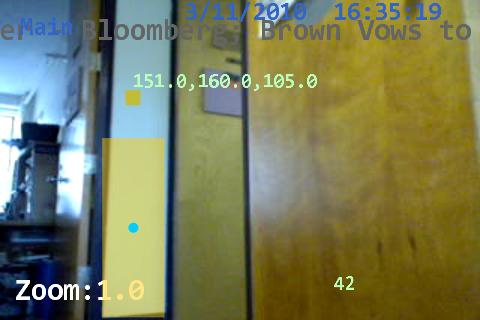Some pictures
Wednesday, November 3rd, 2010These are from the newest version of the Hackerhat software that I’m playing around with.
This is the Hackerhat’s “home screen”, or the main mode where the feed from the camera and the layers are displayed. In this picture, the hackerhat is running a news ticker layer(on top) and a test layer which displays RGB values of a point. The hackerhat also supports zooming the image up to 4x.The text is the lower right corner is a measurement of the amount of latency, or time spent processing the frame before it could be displayed.
This is the layer toggling screen, which allows the user to turn various layers on or off. Selecting the layers is done using a visual target attached to the finger, which is recognized by the computer and acts as a pointer
The document viewer, shown above, allows layers to easily retrieve text from the Internet and display it. Text scrolling and contrast is controlled gesturally by the same motion-tracking device.


